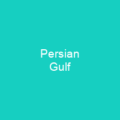The Gulf of Mexico: A Vital Oceanic Basin
Imagine a vast, shimmering expanse of water that has been a cornerstone of history and commerce for centuries—this is the Gulf of Mexico. This oceanic basin, a marginal sea of the Atlantic Ocean, stretches across 1.6 million square kilometers, making it one of the most significant bodies of water in the world.
Geography and Formation
The Gulf of Mexico is not just any body of water; its formation dates back to around 300 million years ago when continental plates collided, creating a basin that would eventually become home to diverse ecosystems and bustling industries. The Gulf’s size and shape are defined by the North American continent, with the United States, Mexico, and Cuba surrounding it on three sides.
The Basin’s Vitality
With almost half of its area consisting of shallow continental shelf waters, the Gulf of Mexico is a treasure trove for offshore petroleum production. It contributes significantly to weather patterns across the United States, making it an indispensable part of our climate system. The name ‘Gulf of Mexico’ itself has a rich history, first appearing on maps in 1550 and named after the Mexica people, better known as the Aztecs.
Geological History
The geological story of the Gulf of Mexico is one of immense change. It did not exist before the late Triassic period when it was part of a dry landmass. The collision of continental plates created a mountain range that later breached, leading to the formation of the Mississippi Embayment. This embayment played a crucial role in the rifting and eventual flooding of the basin.
Evolution Over Time
The Gulf’s evolution is marked by phases of rifting, stretching, and thinning of the continental crust. During the late Jurassic period, seafloor spreading began, creating an enclosed marginal sea. The basin continued to deepen as it subsided faster than sediment could fill it, eventually reaching its current position about 10–20 km below sea level.
Modern Challenges
The Gulf of Mexico faces numerous challenges today. From oil spills and hypoxic dead zones to agricultural runoff and microplastic pollution, the region is under pressure. The Deepwater Horizon disaster in 2010, which released millions of gallons of oil into the ocean, caused widespread damage. However, the resilience of the Gulf is evident as its warm sea surface temperatures can support powerful hurricanes like Hurricane Katrina.
Future Prospects
The future of the Gulf of Mexico remains uncertain but hopeful. As we continue to explore and understand this vast body of water, efforts are being made to mitigate environmental impacts while harnessing its resources sustainably. The Gulf’s importance extends beyond its borders, influencing weather patterns and supporting diverse ecosystems.

The Gulf of Mexico is more than just a body of water; it’s a lifeline for millions, a historical landmark, and an ecological marvel. As we navigate the challenges ahead, let us remember its importance and strive to protect this invaluable resource.
You want to know more about Gulf of Mexico?
This page is based on the article Gulf of Mexico published in Wikipedia (retrieved on February 26, 2025) and was automatically summarized using artificial intelligence.





